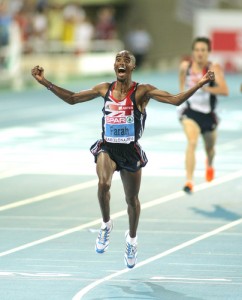Posted on January 27, 2016 by Jenny Cromack
Believe it or not there is an extensive thought process use when designing a personal training client’s program. Which exercise goes first in the session, what are the implications of moving a movement or activity later in the session, should we use a force or velocity dominant movement first, what are the implications if we use a certain muscle group on subsequent exercise selection?
In short, it does matter which order you do your exercises in during your workout, so here Personal Trainer Chris, looks at why the order of exercises is important.
Use this guide to structure your future sessions, to get the most out of every element of your training. If you come across a type of training that is not relevant to you, simply skip it by on to the next item relevant to you.
- Agility/ Speed: Any activity, which requires explosive movement, rapid deceleration, or accelerations, must be completed first. As this training variable is easy to fatigue completing it later in a session yields a poor training results.
- Power: Movements that require a combination of velocity and force, think countermovement jumps, squat jumps, second pull variations of Olympic lift variations and some plyometric exercises.
- Max Force: Following any power movements gives us the opportunity to develop max fore of movements, as a rule of thumb lower body strength exercises are more demanding so should be completed before any upper body variations.
- Submaximal strength training: This is where you can put your hypertrophy/ endurance resistance training. As the load is submaximal the main form of fatigue is peripheral and can be partially recovered between sets (think sets of 6-15 reps). Compound movements should be completed before isolation movements. i.e. bench press, before tricep isolation exercises
- Anaerobic/ Aerobic Conditioning: circuits, or cardiovascular training should be completed towards the end, completing this form of training towards the beginning of training sessions has been shown to reduce maximal power outputs, force production and influence recovery times negatively.
- Flexibility: this offers one of the best windows to enhance flexibility or range of motion, flexibility is not a long term project and if completed regularly until good range of motion is achieved requires little to maintain.
If you follow the above guidelines you can’t go wrong. Although the agility/ speed and power components are often light in load compared to max force, or even submaximal load lifting they require a fresh nervous system and focus to reap optimal benefits.
Example Workout
- Depth Jumps 5 sets 3 reps
- Hang Clean 4 sets 3 reps
- Back Squat 5 sets 3 reps
4a. Bench Pres 3 sets 8 reps
4b. Bent Over rows 3 sets 8 reps
5. Rowing sprints 30:30 x 8
6. Flexibility exercises for hamstrings 10mins


